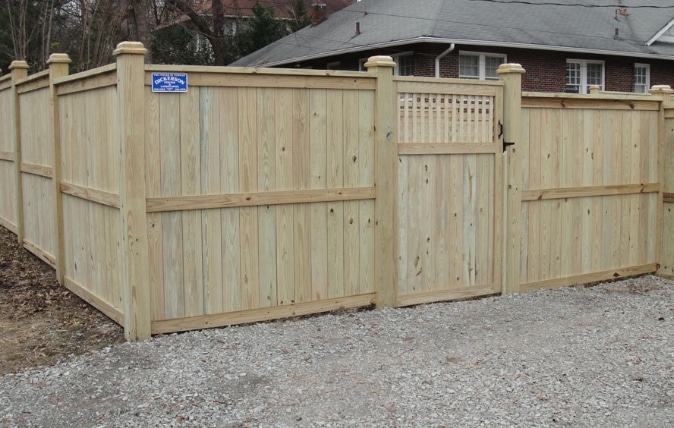Pool Fencing Laws and Options in North Carolina: A Complete Guide for Homeowners
Installing a swimming pool in North Carolina is an exciting endeavor, but it comes with significant responsibilities—chief among them is ensuring proper fencing to protect children, pets, and others from accidental drowning. Whether you’re installing an in-ground, above-ground, or spa-style pool, North Carolina law mandates specific safety barriers. This guide breaks down the legal requirements, acceptable fencing types, and best practices for compliance, helping you make informed decisions while enhancing your property’s safety and aesthetics.
North Carolina Pool Fencing Laws: What You Must Know
Statewide Requirements
North Carolina enforces strict pool barrier regulations under the North Carolina Residential Code and local ordinances. These rules apply to all outdoor pools—residential or public—and include spas and hot tubs unless equipped with a compliant safety cover. (§ 150.18 MINIMUM STANDARDS FOR BARRIERS FOR SWIMMING POOLS, SPAS AND HOT TUBS.)
Key Barrier Requirements
- Minimum Height: The top of the barrier must be at least 48 inches (4 feet) above grade.
- Clearance from Ground: Maximum vertical clearance between the ground and the bottom of the barrier is 2 inches (or 4 inches if mounted on a solid surface like concrete).
- Opening Limitations: Openings in the barrier must not allow passage of a 4-inch diameter sphere.
- Climb-Resistant Design: Barriers must not have handholds or footholds accessible from the outside.
- Gates: Must be self-closing, self-latching, and open outward away from the pool. The latch release mechanism should be at least 54 inches above the ground or meet specific design criteria to prevent child access.
- Dwelling Walls as Barriers: If a wall of a dwelling serves as part of the barrier, one of the following must be met:
- The pool must have a powered safety cover in compliance with ASTM F1346.
- Doors with direct access to the pool must be equipped with an alarm that meets UL 2017 standards.
- Other approved means that provide equivalent protection.
These requirements are consistent across various municipalities in North Carolina.
Residential vs. Public Pool Fencing: What’s the Difference?
Residential Pools
For homeowners, the primary concern is preventing unsupervised access by children and pets. The barrier must completely enclose the pool area and meet the specifications outlined above. If an above-ground pool’s structure is used as the barrier, access points like ladders or steps must be removable, lockable, or surrounded by a compliant barrier .
Public and Commercial Pools
Public pools, including those in apartment complexes, hotels, and community centers, must adhere to similar but sometimes more stringent standards. For instance, gates must be self-closing and self-latching, and any doors or windows opening into the pool area must be self-closing or equipped with alarms .
Acceptable Pool Fencing Types in North Carolina
Choosing the right fencing material not only ensures compliance but also complements your property’s aesthetics.
1. Wood Fencing
- Pros: Offers privacy and a classic look.
- Cons: Requires regular maintenance to prevent rot and weathering.
- Compliance Tips: Ensure no climbable features and that spacing between vertical members does not exceed 1.75 inches if horizontal members are less than 45 inches apart .
2. Vinyl Fencing
- Pros: Low maintenance and available in various styles.
- Cons: Can be more expensive upfront.
- Compliance Tips: Must meet the same spacing and height requirements as wood fences.
3. Chain Link Fencing
- Pros: Cost-effective and durable.
- Cons: Less privacy and aesthetic appeal.
- Compliance Tips: Mesh size must not exceed 2.25 inches unless slats are used to reduce openings to 1.75 inches .
4. Ornamental Iron Fencing
- Pros: Strong and visually appealing.
- Cons: Can be expensive and may require maintenance to prevent rust.
- Compliance Tips: Spacing between vertical members must not exceed 4 inches if horizontal members are 45 inches or more apart .
Installation and Maintenance Tips
- Professional Installation: Hire licensed contractors familiar with local codes to ensure compliance.
- Regular Inspections: Periodically check for wear and tear, especially on gates and latches.
- Maintenance: Keep the area around the fence clear of objects that could be used to climb over.
- Permits: Always check with your local municipality to determine if a permit is required before installation.
Local Pool Fence Ordinance Highlights – Triangle Area, NC
While the North Carolina Residential Code (based on the International Residential Code) requires barriers around residential pools for safety, local jurisdictions in the Triangle area enforce additional pool fencing requirements:
Raleigh, NC
-
All residential swimming pools must be enclosed with a fence or wall at least 48 inches tall.
-
Gates must be self-closing and self-latching, with latches located at least 54 inches above the ground or on the pool side of the gate.
-
Openings in the fence must not allow the passage of a 4-inch sphere.
-
No climbable objects (like pool equipment or landscaping features) are allowed within 36 inches of the outside of the fence.
Durham, NC
-
Fences surrounding pools must be a minimum of 4 feet high and constructed to prevent access from children under 5 years old.
-
Chain link fences are allowed but must have mesh no larger than 1.25 inches unless slats are used.
-
Access gates must be lockable, self-closing, and self-latching, with the latch placed on the interior side.
-
Temporary fencing is not permitted once the pool is filled with water.
Chapel Hill, NC
-
Pool barriers must be at least 48 inches tall and constructed of durable materials.
-
All gates must swing away from the pool area, be self-closing and self-latching.
-
For properties in historic or design review districts, fencing design must also comply with visual and zoning requirements.
-
Above-ground pools with walls at least 48 inches high may qualify as a barrier if steps or ladders are removable or lockable.
Final Checklist for Pool Fence Compliance
- Barrier is at least 48 inches high.
- Maximum clearance from ground is 2 inches (or 4 inches over solid surfaces).
- Openings do not allow passage of a 4-inch sphere.
- Gates are self-closing, self-latching, and open outward.
- Latch release mechanism is at least 54 inches above ground or meets specific design criteria.
- No climbable features on the exterior side of the barrier.
- If a dwelling wall serves as part of the barrier, it meets one of the approved protection methods.
Final Thoughts
Ensuring your pool is properly fenced is not just about legal compliance—it’s about safeguarding lives. By understanding North Carolina’s pool fencing laws and choosing the right materials and designs, you can create a safe and enjoyable environment for everyone. Always consult with local authorities and professionals to ensure your pool area meets all requirements.
.svg) NEW! We offer financing. Prequalify today and contact us to learn more about financing your next project!
NEW! We offer financing. Prequalify today and contact us to learn more about financing your next project!





